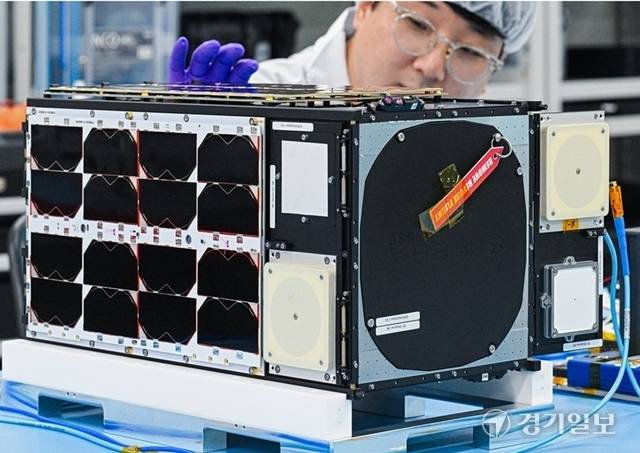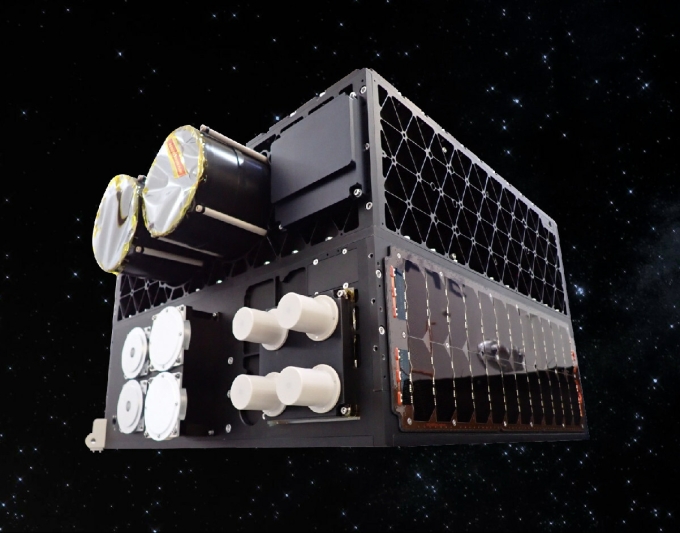Other news

What is Antenna Gain in Satellite Communications? (Explained simply)
Read more
Reflectarray Antennas for Small Satellites: From Concept to First Commercial Deployment
Read more
The ABA First Runner (AFR-1) mission represents a milestone in satellite development and international collaboration, bringing together the expertise of Azista BST Aerospace and Berlin Space Technologies GmbH (BST). Launched on June 13, 2023, aboard a SpaceX Falcon 9 rocket during the Transporter-8 rideshare mission, AFR-1 serves as a technology demonstrator for Earth observation. Featuring a modular satellite platform and cutting-edge imaging capabilities, this mission also benefits from Anywaves’ high-performance S-Band antennas for reliable communication. AFR-1 highlights the potential of small satellite technology for a variety of practical applications, including agriculture, urban planning, and environmental monitoring
Let’s deep dive in this mission!

Azista BST First Runner – Electro Optical Wide Swath Satellite
The AFR-1 mission’s primary goal is to demonstrate the capabilities of modular satellite platforms for Earth observation. The satellite was launched from Space Launch Complex 4E at Vandenberg Space Force Base in California. The satellite was deployed into a Sun-Synchronous Orbit (SSO) at an altitude of approximately 500 kilometers. This orbit ensures consistent lighting conditions for Earth observation, making it ideal for capturing high-quality images.
The mission underscores the growing role of private aerospace companies in deploying cost-effective, high-performance satellites for remote sensing applications.
This launch marked a significant step forward for Azista BST Aerospace, an Indian-German joint venture. The mission highlights their capability to design, manufacture, and launch sophisticated small satellites, aimed at strengthening the imaging and remote sensing industry. AFR-1 is designed to provide both panchromatic and multispectral imaging data for various applications such as agriculture, urban planning, and disaster management.
The ABA First Runner (AFR-1) is an 80-kilogram satellite based on a modular bus platform. This design allows flexibility and scalability for future missions. The modular design facilitates the integration of different payloads and subsystems, enabling future adaptations for various mission requirements.
The satellite hosts a wide-swath optical remote sensing payload with the following key capabilities:
These imaging capabilities allow AFR-1 to capture high-resolution imagery suitable for applications such as:
The compact design and robust architecture of AFR-1 enable efficient deployment and operation in low Earth orbit (LEO). This mission also serves as a foundation for future remote sensing satellites planned by Azista BST Aerospace and Berlin Space Technologies.
Anywaves played a crucial role in the success of the AFR-1 mission by providing two high-performance S-Band antennas. These antennas are responsible for the satellite’s Telemetry, Tracking, and Control (TT&C) operations, which are critical for mission success.
Anywaves’ antennas are known for their robustness, reliability, and efficiency, making them ideal for demanding space missions. The use of these antennas ensures seamless communication throughout the satellite’s operational life, reinforcing the importance of dependable TT&C systems in modern space missions.

The SpaceX Transporter mission launching from Vandenberg Space Force Base. (Photo: SpaceX)
As a technology demonstrator, AFR-1 successfully achieved the following outcomes:
The mission’s data is contributing to various applications, including environmental monitoring, urban development, and agricultural planning, enhancing the value of AFR-1 as a remote sensing platform.

1st contact with AFR. Credits; Azista BST Aerospace
The ABA First Runner (AFR-1) mission exemplifies successful collaboration between Azista BST Aerospace, Berlin Space Technologies GmbH, and Anywaves. Launched aboard SpaceX’s Falcon 9 during the Transporter-8 mission, AFR-1 has demonstrated the effectiveness of modular satellite platforms and advanced remote sensing capabilities. Anywaves’ S-Band antennas ensured reliable communication, underscoring their critical role in the mission’s success.
This mission not only showcases technological advancements but also paves the way for future satellite missions, contributing to global remote sensing and Earth observation efforts. AFR-1 is a stepping stone toward broader deployment of small satellites capable of delivering valuable data for diverse applications, reinforcing the growing importance of international partnerships in the space industry.



If you have any question, we would be happy to help you out.